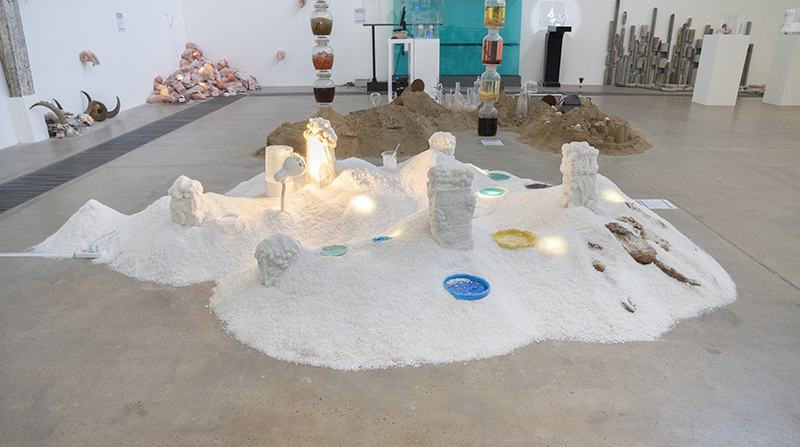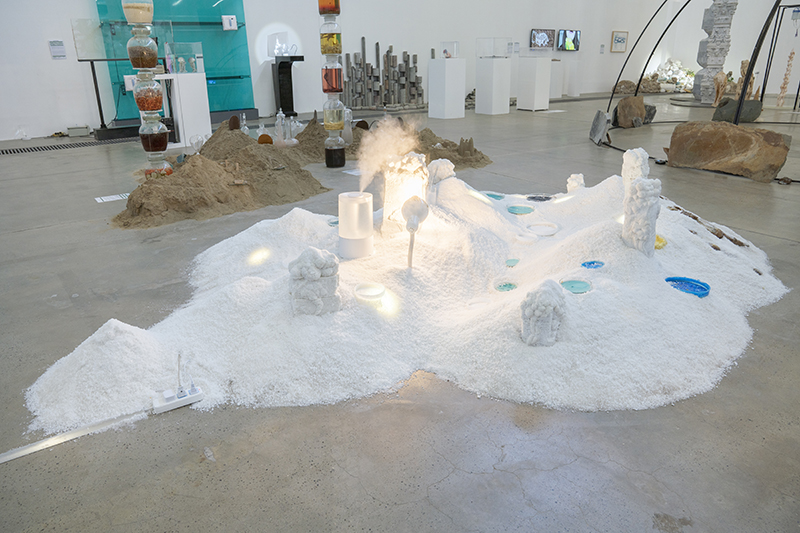 |
Salt Piles |
||||||||||||||||||||||||||||||||||||||||||||||||||
|
A batch of sea salt is sprinkled on the ground, forming several piles. Salt, essential for the body and diet, is used for preserving food and even for mummifying bodies. It is also used for purification - it is mentioned in the Bible that Sodom and Gomorrah were purified with salt, and sinners were turned into pillars of salt. Salt is versatile in various cultures: to ward off evil, and to deter unwelcome strangers. It can also be found on both sides of the entrance to a house at funerals. Among these piles of salt, there are seven salt pillars of varying heights, growing from supersaturated solutions, with amorphous cloud-like shapes appearing at the tops. These shapes are the traces left by the evaporation and sublimation of water during the salt drying process. Light bulbs are placed in advance within the salt piles, programmed to emit light alternately and rhythmically. Ten Petri dishes of different calibres are scattered throughout this scene, with salt crystals being generated within. A humidifier releases moisture toward them, and when the humidity exceeds 75 %, the salt absorbs the moisture from the air and dissolves. At this point, the sodium chloride solution is conductive. It connects to the power supply of a small drying device, which begins to bake the salt solution. When it dehydrates and solidifies, losing its conductivity, the drying device automatically cuts off the power and stops baking. The Petri dishes continue to absorb moisture, generating salt crystals, until they regain conductivity
|

